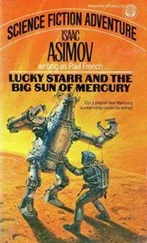In the shimmering images on the cockpit displays, the landing pad and surface facilities of Erebus Mine lay spread out below them, like one of the models they had examined back on Earth. Instead of the tall towers of the refinery, and the ordered rows of storage spheres and fuel tankers, a scene of utter ruin was revealed.
From the open portal of the mine, by the mountain wall, a wide swathe of wreckage splashed out more than a kilometre into the crater floor, as if the contents of the mine had exploded over the landscape. Unidentifiable fragments of all shapes and sizes were strewn over the crater floor, and a radiating, fan-shaped scar, hundreds of metres across at its widest point, had been blown into the dust of the crater floor by the force of the escaping atmosphere.
Further out on the crater floor, there was just a wide, blackened crater where the ice processing plant and fuel refinery had been. The entire complex was gone, levelled to the ground by an enormous explosion in the fuel refinery. The shattered stumps of the refinery towers and gas processing plant could still be made out in the ruins, and twisted and blackened wreckage sprawled in a wide circle round the remains of the complex.
Nothing had survived. The tank farm near the landing pad had been destroyed completely; every storage sphere had burst open, their thin metal walls bent outwards like half-peeled oranges, their contents gone forever into the ancient dust of the crater floor.
The waiting line of fuel tankers lay askew on twisted and broken landing gear, their giant cargo tanks crushed like beer cans by the impact of wreckage hurled out by the explosion. Gantries and handling arms lay on the ground where they had been hurled, or at drunken angles in the darkness.
Everywhere, there were the signs of smaller, secondary explosions; at several points on the crater floor there were gaping holes where service shafts and underground valve rooms had blown off their roofs and then collapsed, leaving sunken craters.
And there, right in front of them, was the landing pad, a tribute to Clare and Wilson’s navigation and flying. The pad, however, was beyond use; a fuel tanker, caught by the explosion, lay sprawled across the wide rectangle of reinforced concrete, filling it with twisted and broken wreckage. The tanker had burst open, spilling its cargo over the pad’s surface; the liquid had frozen solid in the vacuum, and glistened darkly in the spaceplane’s landing lights.
Clare’s voice broke in, speaking calmly despite the horror of the scene.
‘Okay, the primary landing site is out of action, we need to select another. We’ve just enough fuel to do one circuit of the complex. Steve, I have control. Count me down on the fuel margin.’
‘Roger that, captain. Eighty-four seconds before the decision call.’
Clare punched the ALT HOLD button on the autopilot, took hold of the sidestick, and moved off in a careful, anticlockwise circle, watching an image of the ground move past on her head-up display.
Deep down below them, moving and turning with the motion of the ship, was the large concrete rectangle of the landing pad. Years ago, before the accident, it would have been marked out with runway lights, and spotlights would have bathed the refinery towers and waiting tankers. Now, the whole complex lay in darkness, like the shattered ruins of a ship discovered in the lonely abyss of a deep ocean floor.
The pools of light cast by their landing lights moved slowly over the scene. Clare scanned the area around the pad, looking for a clear area that she could land on. None of the fuel tanker pads was of any use; they were all blocked by wreckage from the explosion. The taxiways around the main landing pad were too narrow to attempt a landing on, but there was a wider, wedge-shaped space where two taxiways merged, and it seemed to be free of any wreckage.
‘Sixty seconds,’ Wilson warned, ‘we need a landing site.’
As if to underline the point, the flight computer spoke. ‘ Fuel margin. Decide now.’
‘Yeah, I know,’ Clare’s eyes never left her display. ‘That’s our best place, on the taxiway junction.’ She pointed at the display.
‘It’s only just big enough. We’ll need to watch that crane.’ Just off the edge of the taxiway junction, a partly collapsed crane gantry leaned over, bent in the middle as if it had been punched in the stomach. If Clare put the spaceplane down right, the wing tips would clear it – but only just.
‘Other options?’
‘Can’t see anything else.’ He glanced back at the fuel displays, which showed the narrowing margin they had before they would have to abort the landing and climb back to orbit. ‘We’re getting really low on fuel. Fifty seconds.’ A drop of sweat trickled down the side of Wilson’s temple.
Time seemed to slow to a crawl as Clare’s mind raced through the options and the terrible decision. Abort now, and they faced another hundred-plus days in space, and she would have to endure Helligan’s cynical smile on her return. There would be no chance the mission would be attempted again, after what they had found here.
Land, and she would be a hero, pulling off a daring landing in the best spirits of the Astronautics Corps.
But if she screwed it up, and piled the ship into the frozen crater floor, they would be dead, and nobody would be coming to recover their bodies, not this far down in the Sun’s gravity well. They would just be another statistic to add to the body count at Erebus Mine, and the Space Graves Commission’s register of the long toll of lives lost in space.
‘ Fuel margin critical. Decide now,’ the computer warned them, its voice becoming more strident.
‘Forty seconds.’
Behind the pilots, Matt and Bergman gripped the arms of their seats, and Elliott and Abrams behind them copied them unconsciously.
To land, or not to land.
The seconds ticking away now, eating into their safety margin. A few seconds more, and there would be no choice.
Helligan’s mocking smile looked back at Clare from the darkness outside.
She decided.
‘We’re landing. Lock altimeter on target – there, and read the checklist.’
She swung the spaceplane round so that its wings were over the widest part of the taxiway junction, to give the landing gear as much room as she could. Gridlines and tick marks appeared on the displays, counting down the distance to the ground.
Wilson ran through the final checklist items.
‘Radar altimeter locked on, one hundred fifty metres. Gear down and locked. Engine cutoffs armed. Landing checklist complete. Thirty seconds remaining.’
‘ Fuel margin critical. If not landed, abort.’
‘I have it, just need to move her across – a bit more.’ Clare nudged the controls slightly, lining up the huge bulk of the Olympus exactly on the clear space.
‘Gently does it, come on baby,’ Clare muttered to the heavy ship, 120 tonnes of airframe and fuel, floating on the jets of superheated gas that sprayed out in a fan-shape below. Her hand moved fractionally, and the ship crept across until it was centred on the target spot.
‘Twenty seconds!’
‘That’s it. Landing now. Keep an eye on that crane.’ Clare pressed the red button on her sidestick, and a warning tone sounded in the cockpit as the autopilot disconnected, putting the ship under Clare’s control.
The spaceplane rocked slightly as she adjusted its attitude and brought the wings level, the radar altimeter probing the distance to the ground.
Clare’s right hand reached out to the thrust levers and pressed the disconnect button for the autothrottle, giving her command over the engines. She backed off the thrust slightly, keeping the wings level, to start the descent towards the landing site.
Читать дальше











